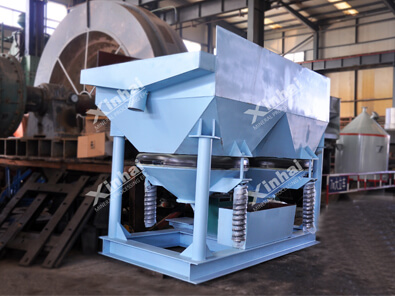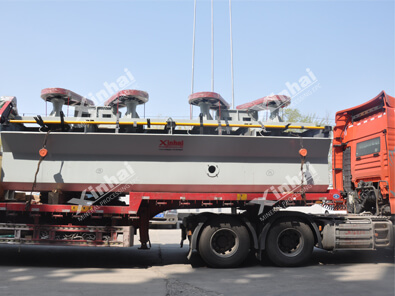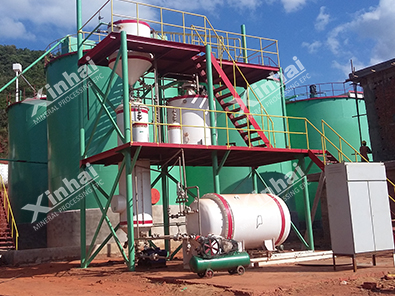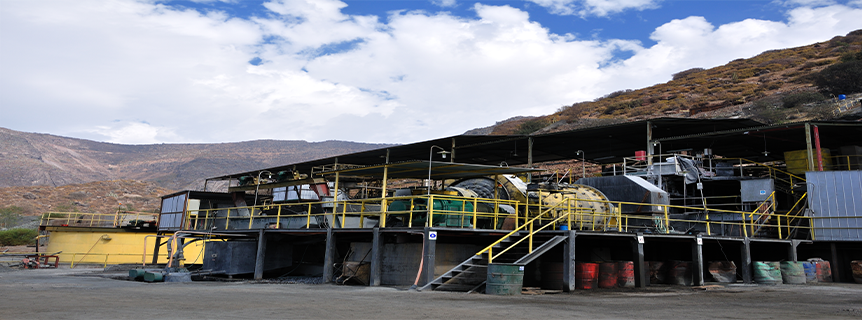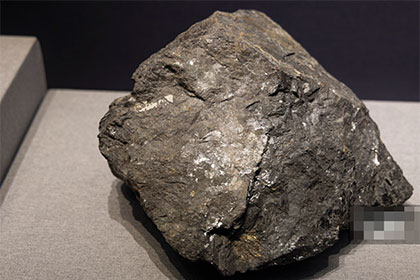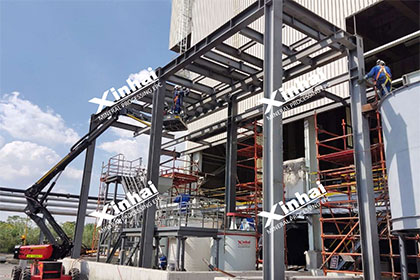Gold Beneficiation Techniques: Boosting Your Yield Efficiently
 Essow
Essow
 Jun 26, 2024
Jun 26, 2024
 1278
1278
If you want to know more details about equipment, solutions, etc, please click the button below for free consultation, or leave your requirements!
01Understanding Gold Beneficiation
BackDefinition and Importance of Gold Beneficiation
Gold beneficiation refers to the range of processes employed to enhance the extraction and recovery of gold from ores and concentrates. This practice raises the overall yield and purity of the gold being extracted, thereby increasing the efficiency and profitability of mining operations. By implementing advanced gold beneficiation techniques, stakeholders in the gold mining industry can ensure that the maximum possible amount of gold is recovered, reducing waste and streamlining processes. Given the finite nature of gold resources, the importance of optimizing recovery rates cannot be overstated.
Historical Perspective on Gold Processing
Historically, gold processing has evolved significantly from rudimentary panning and sluicing methods used by early miners to the sophisticated, high-tech procedures in place today. The quest for gold has driven technological advancements throughout centuries, transforming entire economies around the globe. Early gold processing techniques were often labor-intensive and inefficient, leading to significant losses. By contrast, contemporary methodologies leverage cutting-edge technology and chemical processes, ensuring more efficient extraction. These advancements not only increase gold recovery rates but also minimize environmental impacts, a critical consideration in today’s mining operations.
Global Demand and Economic Impact
The global demand for gold remains robust, driven by its myriad applications in industries ranging from electronics to jewelry. Gold’s status as a safe-haven investment underscores its significance during economic uncertainties, prompting sustained interest in gold mining and beneficiation. Economically, the gold industry is a major contributor to many national GDPs, generating substantial revenue and providing employment opportunities. Efficient gold beneficiation inherently supports this economic importance, stabilizing and potentially enhancing the financial returns of gold mining activities. As global markets continue to value gold, the role of optimized beneficiation becomes increasingly pivotal, ensuring that economies can fully capitalize on their gold resources.
02Different Methods of Gold Beneficiation
BackGravity Concentration Techniques
Jigging
Jigging is one of the oldest techniques in gold beneficiation, leveraging the density difference between gold and other minerals. By creating an oscillatory motion in a water medium, heavier gold particles settle to the bottom while lighter waste materials are washed away. This method is particularly effective for coarse gold particles and offers significant advantages due to its simplicity and low operational costs. However, it may not be as efficient for fine gold, necessitating supplementary techniques to maximize recovery.
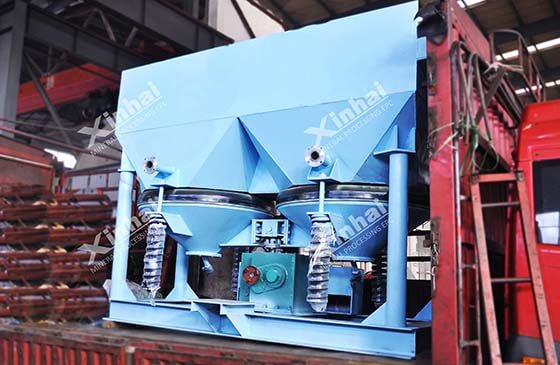
(Jig)
Shaking Tables
Shaking tables involve the use of a table that is slightly tilted and vibrated to encourage the separation of gold from lighter materials. As the mixture of ore and water is passed over the table, the dense gold particles are caught in grooves on the surface, while lighter particles are washed away. This technique is highly effective for finer particles of gold and is commonly used in conjunction with other methods. Shaking tables are valued for their precision and ability to achieve high recovery rates, making them a staple in various gold beneficiation setups.
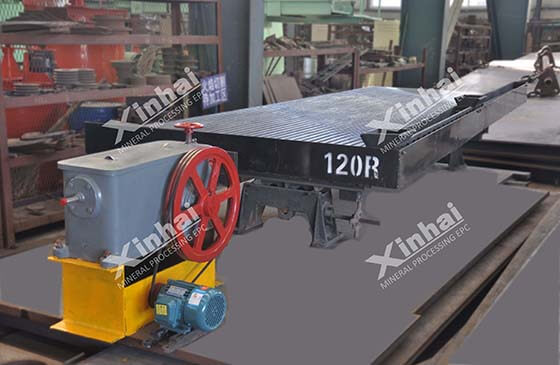
(Shaking Table)
Spiral Concentrators
Spiral concentrators employ gravity to separate gold from ore, utilizing spiral-shaped channels to create centrifugal force. As the ore slurry passes through these channels, denser gold particles are forced outward and collect in the grooves. This technique is favored for its efficiency and ease of operation. Spiral concentrators are especially beneficial for processing fine-grained ores, enabling effective gold recovery with minimal operational complexity. They are often integrated into larger beneficiation systems, complementing other gravity-based methods.
Flotation Process
The flotation process involves using chemicals to create bubbles to which gold particles can attach. The ore is ground to fine particles and mixed with water and flotation reagents to form a slurry. In the flotation cells, air is introduced, creating bubbles that rise to the surface, carrying gold particles with them. The froth containing the gold is then skimmed off, while the waste remains in the slurry. This method is advantageous for ores that contain gold mixed with sulfides or other minerals that are not easily separated by gravity concentration. The flotation process is highly effective and commonly used in modern gold beneficiation operations.
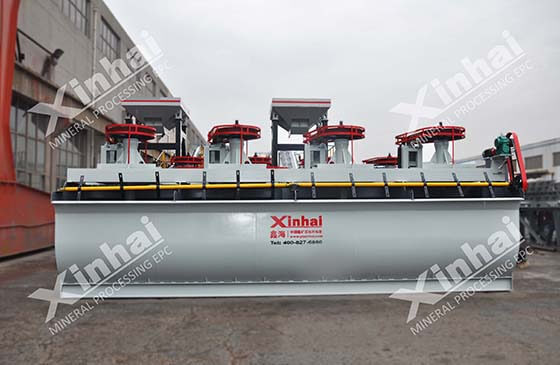
(Flotation Machine)
Cyanidation
Cyanidation, also known as leaching, is a chemical process whereby gold is dissolved in a cyanide solution. The gold-containing ore is crushed and ground to increase the surface area for the cyanide to act upon. Once the ore is in slurry form, cyanide solution is added, allowing the gold to dissolve. Afterward, the gold-laden solution is separated from the residue and undergoes further processing to extract pure gold. This technique is highly effective for finely milled ores and refractory gold. Despite its efficiency, it requires careful handling and extensive regulations due to the potential environmental and health risks associated with cyanide use.
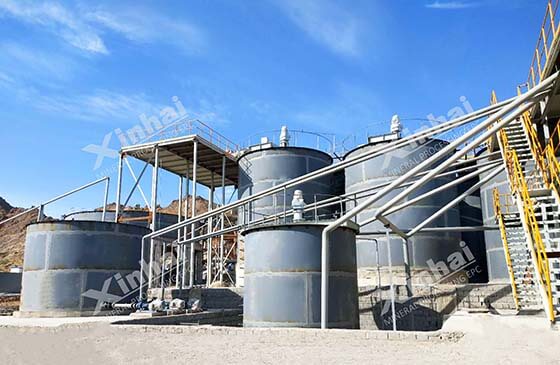
(Gold Leaching Tanks)
Amalgamation
Amalgamation involves the use of mercury to extract gold from ore. The gold particles bind with mercury to form an amalgam, which can then be separated from the rest of the ore. The amalgam is subsequently heated to vaporize the mercury, leaving behind pure gold. This method, while historically significant, has largely fallen out of favor due to the severe environmental and health hazards posed by mercury use. Current trends in gold beneficiation emphasize more sustainable and eco-friendly methods, pushing amalgamation to a secondary role in modern practices.
03Technological Advances in Gold Beneficiation
BackModern Machinery and Equipment
Crushers and Grinders
Modern gold beneficiation leverages advanced machinery to improve efficiency and throughput. Crushers and grinders are crucial in this respect, as they break down ore into finer particles to increase the surface area for further processing. Recent technological advances have led to the development of high-capacity crushers and ultra-fine grinders, which significantly enhance the overall beneficiation process. These machines not only reduce the time required for processing but also improve the extraction rates of gold from ore. The implementation of more robust and precise machinery reduces operational costs and increases yield, setting new benchmarks for gold beneficiation efficiency.
Separators and Classifiers
Separators and classifiers play a pivotal role in sorting and categorizing ore particles based on various physical properties. New technological advancements have led to the development of highly efficient magnetic separators, electrostatic separators, and hydrometallurgical classifiers. These machines effectively isolate gold from other impurities, ensuring a higher grade of output. Use of sophisticated classifiers that can differentiate particle sizes with immense precision further enhances the recovery rate. The integration of these advanced machines into the gold beneficiation process optimizes performance and minimizes human error, ensuring a more consistent and high-quality yield.
Automation and Digitalization
Automation and digitalization are transforming the landscape of gold beneficiation. Automated systems control various stages of the beneficiation process, reducing human intervention and increasing precision. Digitalization aids in the real-time monitoring of operations through data analytics, sensors, and smart interfaces. Such technology allows for predictive maintenance, reducing downtime and operational disruptions. Furthermore, automation ensures that the process operates within optimal parameters at all times, maximizing gold recovery rates. Use of artificial intelligence and machine learning algorithms provides new avenues for improving extraction techniques and ensures more efficient use of resources.
04Environmental Considerations in Gold Beneficiation
BackManaging Waste and Byproducts
Effective management of waste and byproducts is essential for sustainable gold beneficiation. Mine tailings, waste rock, and other byproducts must be processed to minimize their environmental impact. Modern techniques like tailings reprocessing and the incorporation of advanced filtration systems reduce the footprint of waste materials. Management practices include converting byproducts into commercially viable products, thereby reducing waste and generating additional revenue streams. Implementing these measures minimizes the environmental burden and promotes a sustainable approach to gold beneficiation.
Pollution Control Measures
Pollution control is a critical aspect of responsible gold beneficiation. Innovative technologies aim to reduce the release of harmful contaminants like mercury and cyanide into the environment. Advanced filtration and containment systems prevent the leakage of hazardous materials, while air monitoring systems ensure compliance with emission standards. Process water is often recycled through closed-loop systems, minimizing water pollution. These control measures significantly diminish environmental pollution, complying with stringent regulatory standards and promoting the broader goals of environmental conservation.
Sustainable Practices
Sustainable practices in gold beneficiation focus on reducing the environmental impact while maximizing resource utilization. Techniques like bioleaching, which employs microorganisms to extract gold, reflect advancements in eco-friendly beneficiation. Renewable energy sources, such as solar or wind power, can be integrated into mining operations to reduce the carbon footprint. Sustainable practices also involve rehabilitating mined land through reforestation and soil stabilization programs. By adopting these measures, the industry moves towards a more sustainable future, balancing economic gains with environmental stewardship.
05Case Studies: Successful Gold Beneficiation Projects Around the World
BackProject Overview
Location and Scope
Gold beneficiation projects worldwide have demonstrated the successful implementation of advanced techniques. One notable case is the mine in Yanacocha, Peru, the largest gold mine in Latin America. This project illustrates the application of cyanidation and other modern processes, alongside stringent environmental protocols. Another example is the Pueblo Viejo mine in the Dominican Republic, which employs state-of-the-art flotation processes and gravity concentration technologies. These projects highlight the potential of contemporary gold beneficiation methods to achieve substantial yields while adhering to environmental and social standards.
Outcomes Achieved
These case studies proved the effectiveness of modern technologies in gold beneficiation, resulting in higher recovery rates and reduced environmental footprints. Yanacocha's implementation of advanced cyanidation techniques enabled efficient gold extraction from low-grade ores, elevating its output significantly. Pueblo Viejo benefited enormously from innovative flotation processes, achieving high levels of ore refinement and gold concentration. Additionally, these projects illustrated the importance of sustainable practices, with successful integration of pollution controls and waste management systems, marking a trend toward greener mining operations.
06Challenges in Gold Beneficiation and Future Prospects
BackTechnical Difficulties
Despite advancements, gold beneficiation encounters various technical challenges. Refractory ores, which resist conventional extraction methods, represent a significant hurdle. Innovations like pressure oxidation and bacterial leaching are being developed to address these challenges. Moreover, differentiating fine gold particles from complex mineral matrices requires sophisticated and costly technology. Consistently adapting to these challenges is crucial for ongoing improvement in beneficiation processes.
Economic Factors
The economic viability of gold beneficiation heavily depends on fluctuating gold market prices and operational costs. High energy consumption and expensive reagents for processes like cyanidation impact profitability. Furthermore, the initial capital expenditure on modern machinery and technology can pose a barrier, especially for smaller operations. Balancing these economic factors while ensuring efficient processes remains an ongoing challenge.
Innovations on the Horizon
The future of gold beneficiation lies in continued research and innovation. Emerging technologies such as nanotechnology and advanced robotics hold promise for revolutionizing extraction and processing methods. Exploration of new chemical reagents with lower environmental impacts and higher effectiveness is ongoing. Moreover, the integration of blockchain technology for traceability ensures ethical sourcing and compliance with regulatory standards. As these innovations mature, they will likely address current challenges and set new benchmarks for gold beneficiation efficiency and sustainability.
07Practical Tips for Effective Gold Beneficiation
BackBest Techniques for Specific Ore Types
Sulfide Ores
For sulfide ores, flotation coupled with fine grinding is highly effective. Crushing and grinding to a fine consistency increases the surface area, allowing better attachment of gold particles to flotation reagents. Thorough monitoring and control of pH levels and reagent concentration ensure optimal recovery rates. Additionally, roasting the ores before flotation helps in liberating gold particles entrapped in sulfide layers, further improving extraction rates.
Oxide Ores
In the case of oxide ores, cyanidation is typically the preferred method. Pre-oxidation treatments, such as the application of permanganate solutions, can improve the efficacy of cyanidation. Ensuring proper agitation and aeration of the slurry enhances the dissolution rate of gold into the cyanide solution. For more challenging oxide ores, combining cyanidation with gravity concentration methods like jigging or spiral concentrators can yield better results.
Refractory Ores
Refractory ores necessitate more complex beneficiation techniques. Initially, processes such as pressure oxidation, roasting, or bio-oxidation can liberate the gold particles. Subsequently, a combination of gravity concentration, flotation, and cyanidation ensures thorough extraction. Careful optimization of these multi-stage processes is essential to handle the resistant nature of refractory ores effectively, thereby maximizing gold recovery.
By delving into these advanced gold beneficiation techniques and strategies, industry stakeholders can not only boost their yield more efficiently but also contribute to the movement towards more sustainable and economically viable mining practices.
 +86 182 3440 3483
+86 182 3440 3483 yanzhang19990421@gmail.com
yanzhang19990421@gmail.com




 Message
Message Chat Now
Chat Now


